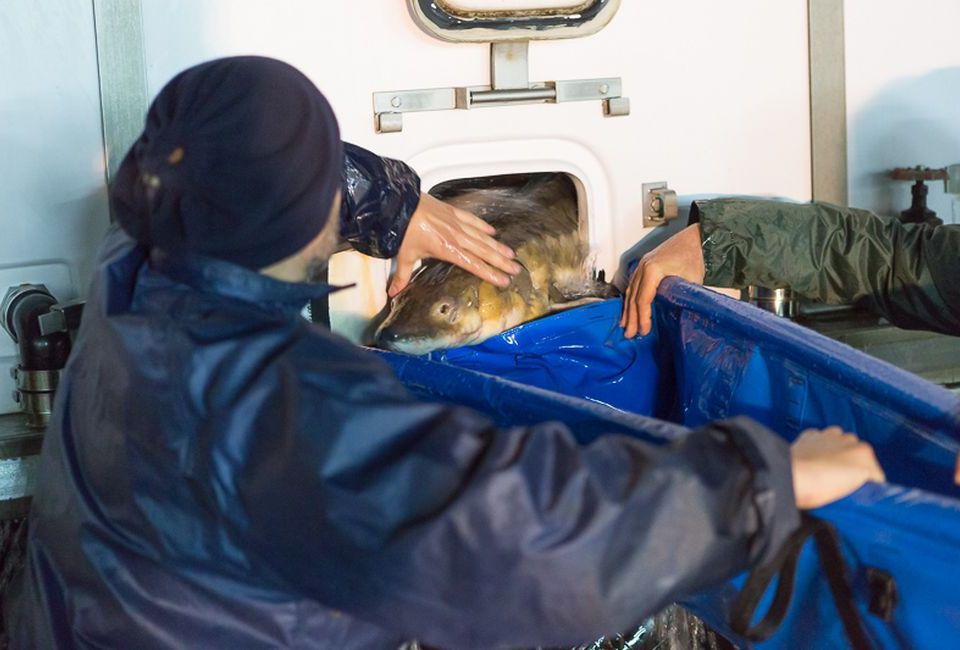
The Migratoebre project brings four sturgeons to the Ebro half a century after their disappearance
The facilities of the IRTA (Institute of Agrifood Research and Technology) in Sant Carles de la Ràpita are now home to four European sea sturgeons (Acipenser sturio) that were brought there from France last week. These are the first specimens of this species that have been brought to the Ebro as part of the LIFE Nature Migratorebre project, which is being led scientifically by the Mediterranean Rivers Studies Centre (CERM) at the UVic-UCC, and aims to repopulate the final stretch of this river with migratory fish. This milestone in the project was presented at a public event last Monday, which was attended by Marc Ordeix, director of the CERM.
This species, which is in grave danger of extinction, disappeared from the Ebro about fifty years ago, mainly as a result of overfishing and because sluices and reservoirs prevented it from travelling upstream to reproduce. The species is very sensitive and susceptible to changes, and these factors led to it dying out. Their life expectancy, of 90 years, and their inability to breed until they are 12 or 13 years old, means that repopulation is difficult. Elsewhere in the world, they have only been successfully reintroduced into the Garonne and Dordogne rivers in Aquitaine (France), where they are still in the recovery process.
The sturgeons that have been brought to the Ebro, which are all 12-year-old males, have been provided by the MIGADO association (Migrateurs du Garonne et Dordogne), in collaboration with the EABX Research Unit of the IRSTEA (Bordeaux), and with the approval of the DREAL of the Government of New Aquitaine. They reached their destination after a 12-hour road trip, an international negotiation process lasting more than two years, and a great deal of preparations and preliminary work.
With their arrival, the MigratoEbre project is now launching a programme to raise awareness among the local population and in Catalonia as a whole about their importance and the need for their reintroduction into the river. With this in mind, the sturgeons' development is being streamed, using two underwater cameras installed in the adapted tank where they live. At the same time, monitoring the fish means their adaptability can be studied as a preliminary step towards the future reintroduction of other specimens of this species in the Ebro.
The LIFE Migratoebre project is working to restore endangered migratory fish species, including the eel, shad and lamprey, as well as the European sturgeon, and to improve the management of the final stretch of the river Ebro, between Flix and the river's mouth in the Delta. As part of the same project, a ramp for fish was inaugurated in Ascó (Ribera d'Ebre) last June. This enables the fish to overcome the barrier of the 170-metre-wide and 2-metre-high diversion dam that collects water for cooling at the Ascó 1 and Ascó 2 nuclear power plants.
The Institute for the Development of the Ebro Region (IDECE) is the body coordinating the project. Besides the CERM, its other beneficiaries are the Fundació Catalunya - La Pedrera, the Ministry of Agriculture, Livestock, Fisheries, Food and the Environment of the Government of Catalonia, and the Institute of Agrifood Research and Technology (IRTA).